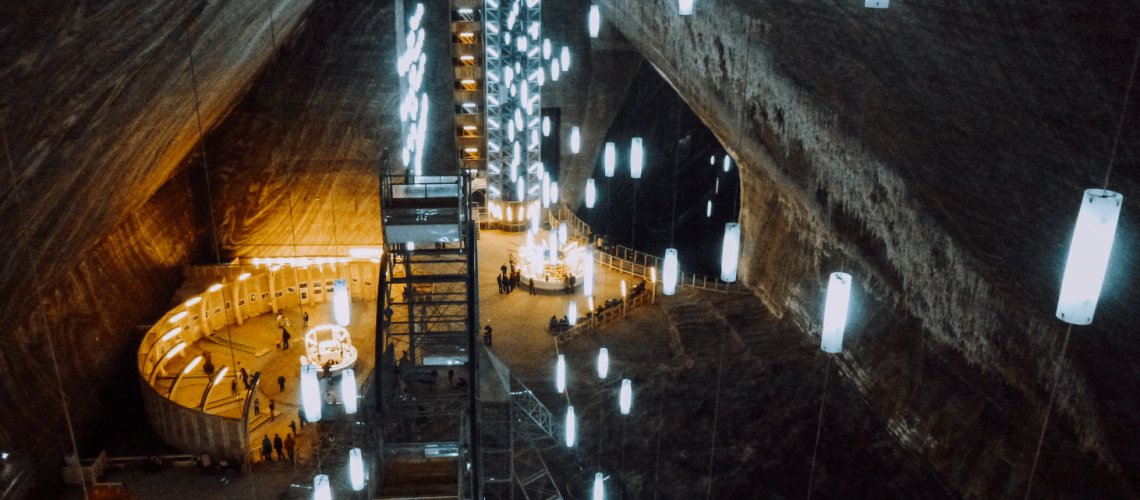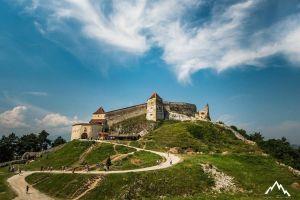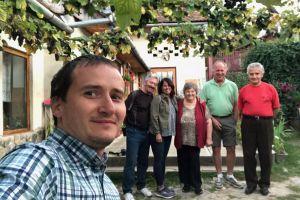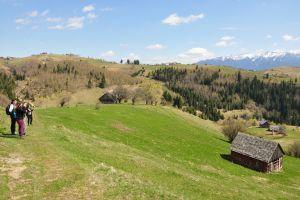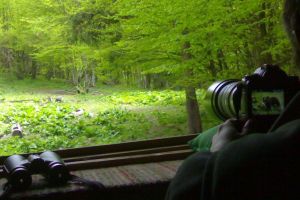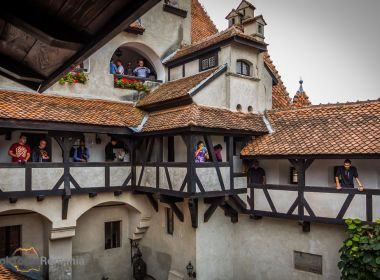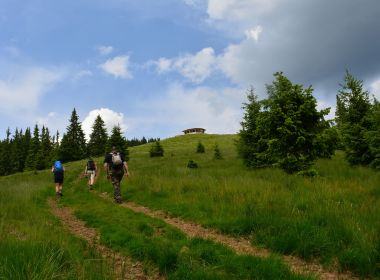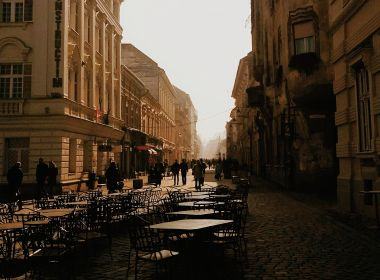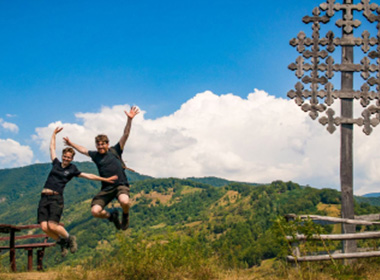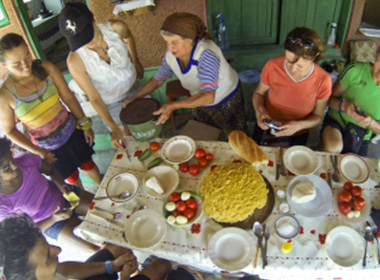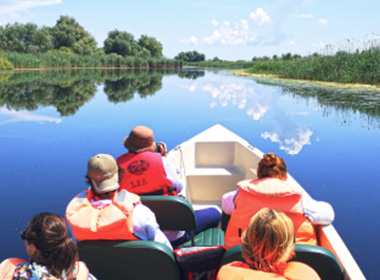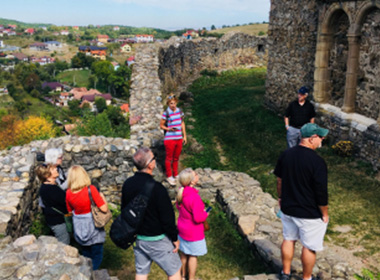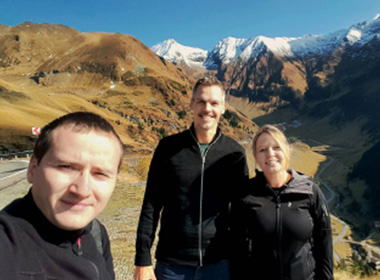To say that Romania is a salt-rich country would be an understatement. With a salt mining history spanning over 2000 years, visiting salt mines in Romania makes sense.
Dacians were mining for salt even before the Roman conquest and later became Rome’s supplier, making it such a commodity that some of the soldiers’ wages were even paid in salt. Fast-forward to medieval times, when it was considered ‘white gold’ and had become crucial in trade.
After it was proven that the air in salt exploitations had health benefits, former and some still operational mines are now main attractions, hosting spas, wellness centers, crafts and play areas, and museums. Although there are enough man-made reasons to wonder at the salt mine excursions, the natural beauty and the underground landscapes will still primarily take your breath away.
Table of contents
- What to Expect in a Romanian Salt Mine
- Health Benefits of Visiting Romanian Salt Mines
- 1. Salina Turda
- Key information for visiting Turda Salt Mine
- 2. Slanic Prahova Salt Mine
- Visiting Slanic Prahova from Bucharest
- 3. Praid Salt Mine
- What you need to know before visiting Praid Salt Mine
- 4. Ocnele Mari Salt Mine
- Opening hours & ticket prices for Ocnele Mari Salt Mine
- 5. Cacica Salt Mine
- The distinctive features of Cacica Salt Mine
- 6. Targu Ocna Salt Mine
What to Expect in a Romanian Salt Mine
Although the idea of a salt mine is generally the same – an extensive underground salt exploitation, each of the most popular mines in Romania has its attractions. However, if we were to break it down into one formula to know better what to expect, it would look like this:
- An impressive underground excavation, usually accessible by car or lift, depending on the specific structure of each mine.
- Guided tours and museums, along with a whole range of activities, spanning from leisure activities for regulars who come in as often as possible to take in the salty air and to lounge, catch up on some reading, and even spend time with friends, to more exciting activities for one-time visitors of all ages. You will find an amusement park, boat rides, spas, pool tables, and more if the space allows.
- The temperature inside most salt mines in Romania is a steady 12- 13 degrees Celsius or 53- 55 degrees Fahrenheit, regardless of the season. If you are visiting in summer, bring some warm clothes. Also, note that everything around you will be made of salt, including the floor, which may have polished patches from all the people walking over it every day, not to mention rough spots. Comfortable flat shoes, preferably laced, are recommended.
- It’s best to avoid taking food inside, as it might alter the air quality in the mine. Of course, one small snack would not, but hundreds of people having picnics in the same enclosed space would. Water and soft drinks are not a problem.
Health Benefits of Visiting Romanian Salt Mines
Visiting Romania’s salt mines offers a unique and fun experience, but locals often rave about the health benefits of salt therapy, or halotherapy. This involves breathing in air infused with tiny salt particles, which contain minerals like sodium chloride, manganese, calcium, and sulfate. These minerals are beneficial for respiratory health.
More common in Eastern Europe, salt therapy is often combined with visits to salt lakes for wet salt therapy. While dipping in salty water benefits joints and bones, dry salt therapy in salt mines mainly supports respiratory health and stress relief.
Some wellness centers inside salt mines offer medical treatments, with immediate effects such as sinus-clearing, reduced inflammation, and lower mucus production. Conditions like asthma may see long-term improvement.
Now, let’s see which are the most interesting and popular salt mines to visit in Romania.
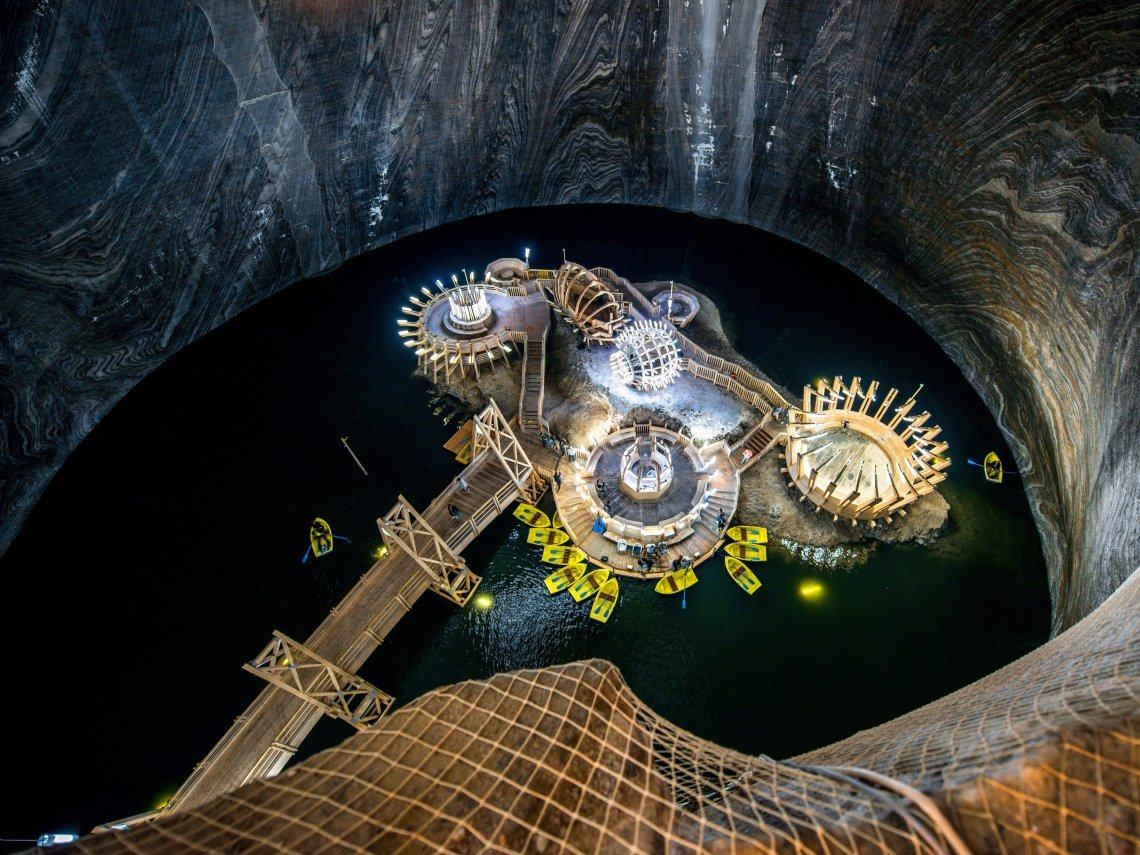
1. Salina Turda
Salt mining in Turda, Romania, dates back to the Roman occupation when the settlement was called Potaissa. However, medieval collapses erased traces of early miners. By 1271, Turda Salt Mine was an important salt supplier in the region.
Today, the Turda Salt Mine is a top tourist attraction, offering a unique underground experience. At 42 meters below the surface, in the Rudolf Mine, visitors can ride a Ferris wheel, go bowling, play billiards or ping pong, and explore a playground for children. Below, at Theresa Mine Lake, you can rent a boat and row in an enclosed space, surrounded by artificial light and the scent of salt in the air.
For a more relaxed visit, explore the museum, watch a show in the amphitheater, or try salt therapy. Guided tours highlight fascinating chambers, including the Echo Chamber, where sound reverberates up to 20 times. This hidden world beneath the earth promises adventure, relaxation, and history in one unforgettable trip.
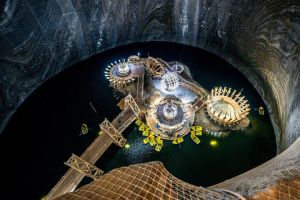
Cluj Top Attractions: Turda Salt Mine, Alba Iulia Citadel & Rimetea Village
Start from: Cluj-Napoca (pick-up)
Key information for visiting Turda Salt Mine
Visiting hours for Salina Turda mine are Monday through Sunday, from 9 AM to 5 PM; the last entry is at 4 PM. Fees are 60 lei for adults on weekends and legal holidays and 50 lei from Monday through Friday. Children, pensioners, people with disabilities, and groups get discounts. The individual tariffs for each activity are mentioned on the website.
Remember to bring a jacket and comfortable footwear. The main chamber has a lift, but there are also stairs—all 13 flights. Depending on your physical condition, the stairs may be challenging, but they are excellent exercise.
If you want to complete the experience with some wet salt therapy, the Durgau Lakes are the perfect place. Located outside the mine but in the same complex, the Ocnei and Rotunda lakes near the mine were formed on the location of caved-in former salt mines. The chlorosodium mineral water in these lakes is good for treating rheumatic diseases and peripheral circulation disorders.
Access to this recreation area for bathing is 25 Lei a day for adults and 15 Lei for children and pensioners. This is a great day trip from when you are visiting Cluj, in the West of the country, as it is only 46 minutes away.
- If you are visiting Cluj-Napoca in early August, make sure to check out our complete Untold Festival guide to make it a memorable experience.
2. Slanic Prahova Salt Mine
The Slanic Mine, also known as Unirea Salt Mine, in Prahova County dates back to the 17th century, with modern exploitation starting in 1852. The mine, opened in 1943 beneath older chambers, has welcomed tourists since 1970 due to its cool microclimate and therapeutic aerosols.
Its vast chambers impress visitors, housing a history museum, sports fields, a karting area, and a playground. Salt sculptures, surrounded by elements specific to Dacians and Romans, can be admired in the Unirea mine and the Genesis hall. They are tributes to the Dacian and Roman leaders, Decebal and Traian.
Ideal for those seeking rest, the mine’s allergen-free air benefits respiratory health. A visit here offers both relaxation and a journey through periods of history.
Visiting Slanic Prahova from Bucharest
Only 100 km away from Bucharest, this is an ideal day trip from the capital. You will go down a narrow mine shaft via bus. There is no other way of getting in or out of the mine. The journey toward the chambers might be a bit problematic for claustrophobic visitors, so make sure to take this into account. Once you reach 208 in-depth, you are left to explore.
The mine is closed to visitors from Monday to Wednesday. It opens from Thursday to Sunday at 9 AM. The last bus leaves at 15:30, and the last bus leaves at 16:30. Tickets cost 45 to 55 Lei, and they can even be purchased online in advance on partner websites.
3. Praid Salt Mine
Around 400,000 people visit the Praid Salt Mine annually, many for health benefits and relaxation. The mine, some 120 meters deep, boasts an extended leisure area with medical treatment areas, a playground, a chapel, a coffee shop, small gift shops, and even a restaurant. There is plenty of room and space to sit back, relax, and breathe healthy, salty air.
The Praid Swimming Pool is another popular destination for people who visit the salt mine. A dip in the salty waters is beneficial for joints and circulation. However, as it is an exclusively outdoor pool, it is only open in summer and when the weather allows it.
- LOCAL TIP: Near the Praid Salt Mine, you'll find Sovata, where you can relax at one of the best spa and wellness hotels in Romania or even ride the Alpine coaster in Toplița.
What you need to know before visiting Praid Salt Mine
The mine is accessible by bus (two shuttles every hour), and there are another 200 steps to climb until you reach the main chamber. People suffering from tuberculosis, claustrophobia, elevated blood pressure, and acute respiratory diseases, among other conditions, should skip this visit.
The average temperature inside the mine is 16 degrees. Ticket prices vary between 45 and 55 Lei. Animals of any kind are strictly forbidden. Praid is located in Harghita County, one hour from Targu Mures City and one hour and a half away from Miercurea Ciuc.
4. Ocnele Mari Salt Mine
The Ocnele Mari Salt Mine is located in Valcea County, 8 km from Ramnicu Valcea and less than 3 hours from Bucharest. I strongly recommend a visit here because we found evidence of salt exploitation as early as the Neolithic, continuing into the Iron and Bronze Ages, and even later, in Dacian times. The Buridava Dacian fortress was located in the area, and its ruins can be visited.
The chamber became a tourist attraction in 2009 when exploitation ceased, and it was opened to the public. It has volleyball, basketball, football, tennis courts, pool tables, mini-golf, playgrounds for children, and even a skating ring. The place is designed for relaxation and exercise. When you have an appetite, you can try the restaurant or grab a snack from the store.
Opening hours & ticket prices for Ocnele Mari Salt Mine
The average temperature in the Ocnele Mari Salt Mine is 13 – 15 degrees Celsius, and the air humidity is 50%. Access is made by bus, and there are two shuttles every hour. The ride takes about 10 minutes.
Visitation is usually possible Monday through Sunday, from 10 AM to 4 PM on weekdays and 5 PM on weekends. However, the schedule may be subject to change, so I recommend checking the website, which keeps updated schedule information. Ticket prices vary between 45 and 55 Lei.
5. Cacica Salt Mine
The Cacica Salt Mine in Bucovina, Suceava County, one of the oldest salt mines, dates back to the 15th century. Is the two-hour drive from Iași or seven-hour drive from Bucharest worth it? You decide.
To enter, you’ll descend a 200-year-old wooden staircase covered in salt, which is surprisingly sturdy. The first sight is the Saint Varvara Chapel, built by miners in 1806 for protection. Tourists can also visit the machinery museum, work out at the gym, play football, and spend some time in the Echo Room at the end of the tour. This vast, 44-meter-deep room was once used as a storage facility.
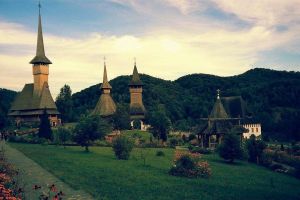
2 or 3 Days in Maramures: Wooden Churches, Traditions & Village Life
Start from: Cluj-Napoca
The distinctive features of Cacica Salt Mine
Other highlights include the Brine Lake (Lacul Sarat), with a salt-covered raft in the center, and the unique dance hall at 37 meters deep. The hall features chandeliers, three balconies carved directly into the salt, and a towering ceiling. The mine’s tunnels offer a glimpse into history, making it a fascinating experience.
Apart from salt, the mine has an odd smell: petrol. If you get easily nauseous, you should reconsider this trip or at least decide once you are there, as you can feel it outside. Also, note that the smell lingers on clothes after visitation.
The mine is open year-round from 9 AM to 5 PM, Monday through Sunday. Tickets cost 5 to 10 Lei.
6. Targu Ocna Salt Mine
The Targu Ocna Salt Mine is located in Bacau County, four hours away from Bucharest. It is 240 meters deep in the ground. The mine promises visitors the best conditions for relaxation, sports practice, and respiratory issues treatments provided by the staff. The main attraction is the Saint Varvara Church, built in 1992 and the only one in Europe made entirely of salt.
Children can access fully equipped playgrounds, and adults have pool tables, slot machines, and recreation areas. For more excitement, you can visit outside and spend some time at the outdoor saltwater swimming pool.
The visiting hours are 7 AM to 5 PM daily. Company buses provide access. The ticket price is 18 Lei for adults and 9 Lei for children.
***
Salt mines in Romania are places where visitors can learn more about how this valuable resource gets from the mine to our tables. The history of exploitation and how it influenced nearby communities is just as appealing.
In addition to the health benefits and leisure and sports facilities, each visit makes for a great day trip accessible from most of the prominent Romanian cities.
